| << Chapter < Page | Chapter >> Page > |
There are two types of scanning probe microscope: the scanning tunneling microscope (STM) and the atomic force microscope (AFM) . An STM uses a probe that is passed just above the specimen as a constant voltage bias creates the potential for an electric current between the probe and the specimen. This current occurs via quantum tunneling of electrons between the probe and the specimen, and the intensity of the current is dependent upon the distance between the probe and the specimen. The probe is moved horizontally above the surface and the intensity of the current is measured. Scanning tunneling microscopy can effectively map the structure of surfaces at a resolution at which individual atoms can be detected.
Similar to an STM, AFMs have a thin probe that is passed just above the specimen. However, rather than measuring variations in the current at a constant height above the specimen, an AFM establishes a constant current and measures variations in the height of the probe tip as it passes over the specimen. As the probe tip is passed over the specimen, forces between the atoms (van der Waals forces, capillary forces, chemical bonding, electrostatic forces, and others) cause it to move up and down. Deflection of the probe tip is determined and measured using Hooke’s law of elasticity , and this information is used to construct images of the surface of the specimen with resolution at the atomic level ( [link] ).
[link] , [link] , and [link] summarize the microscopy techniques for light microscopes, electron microscopes, and scanning probe microscopes, respectively.
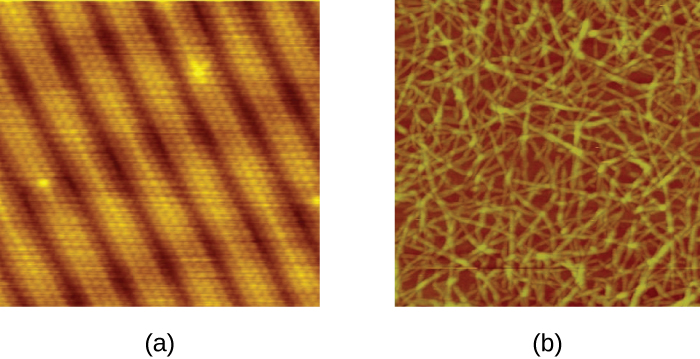
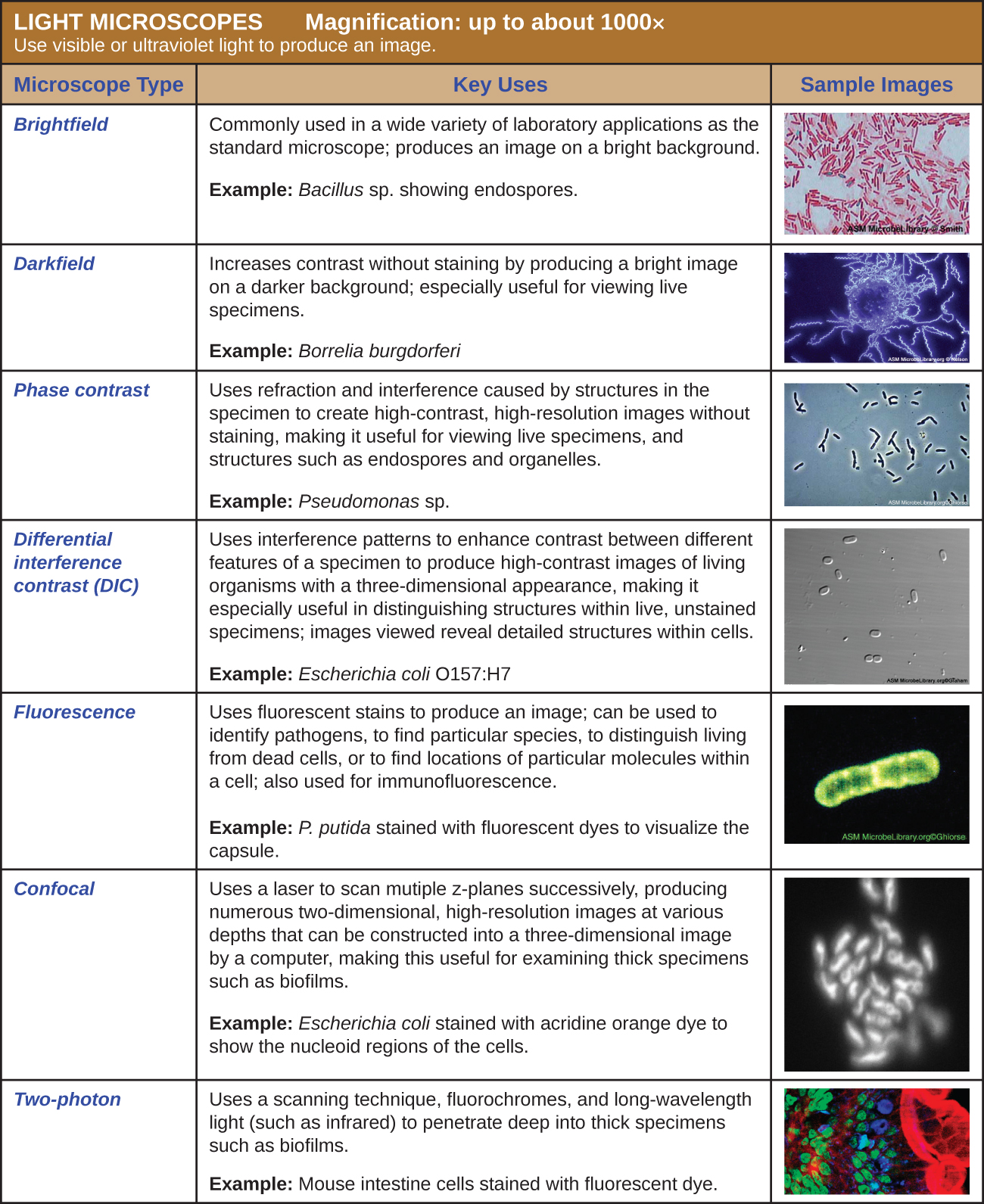
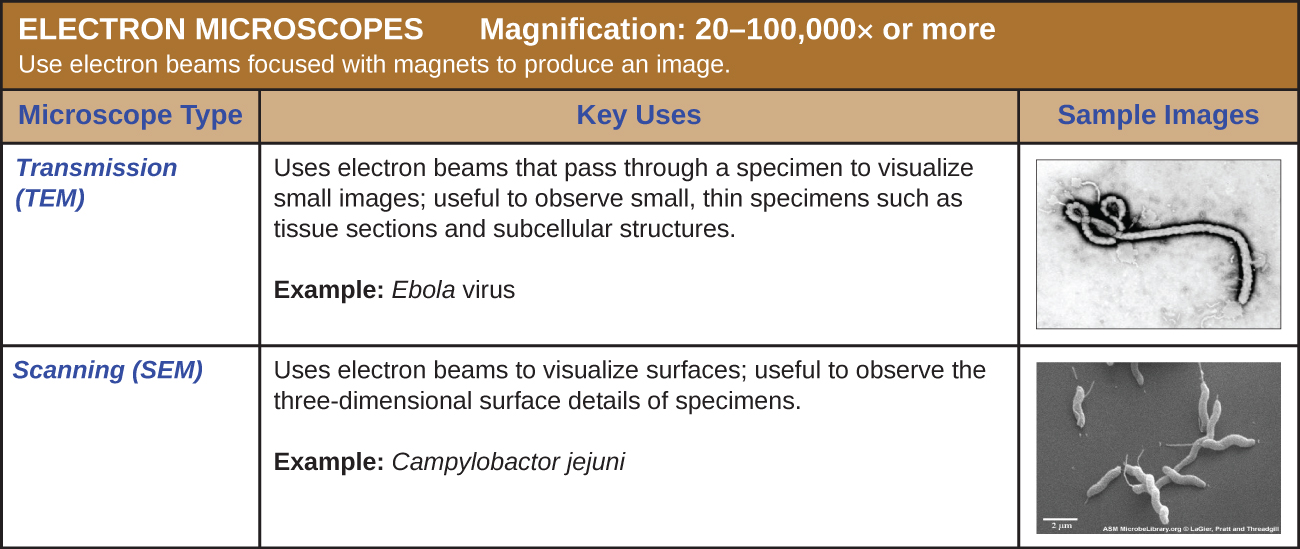
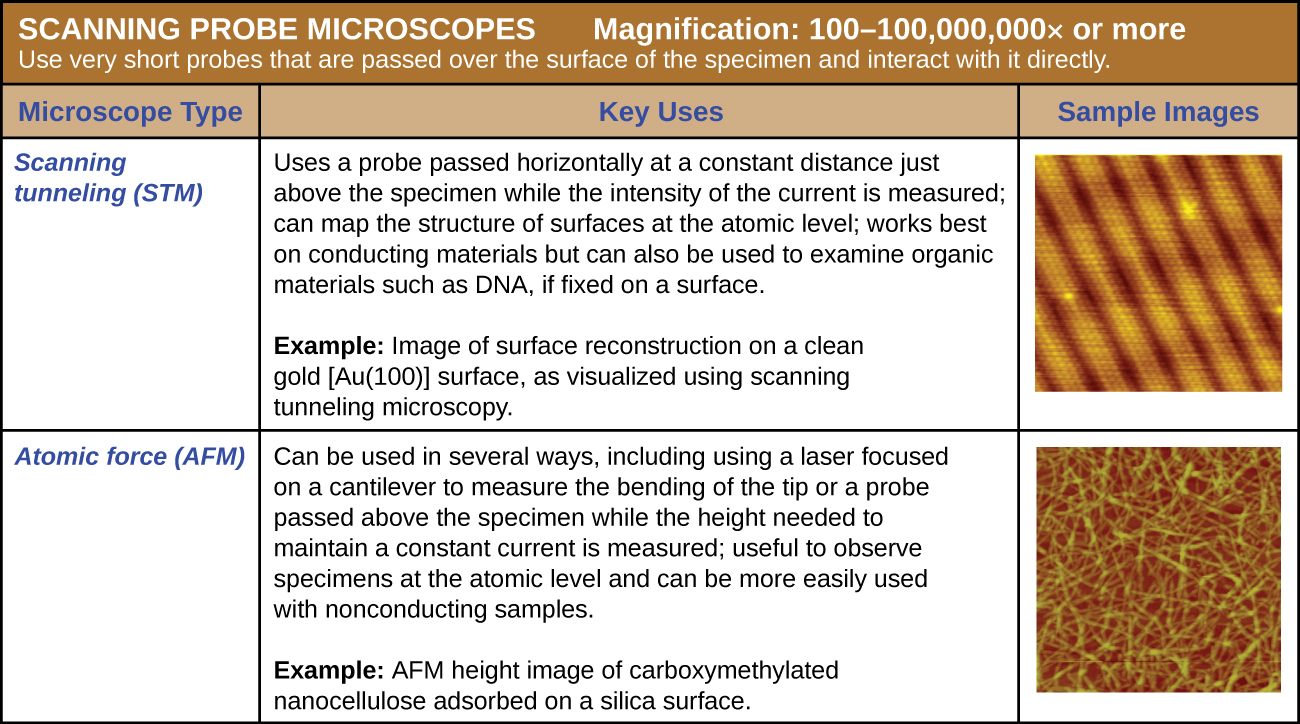
Chromophores that absorb and then emit light are called __________.
fluorochromes
In a(n) _______ microscope, a probe located just above the specimen moves up and down in response to forces between the atoms and the tip of the probe.
atomic force microscope
What is the total magnification of a specimen that is being viewed with a standard ocular lens and a 40⨯ objective lens?
400⨯
What is the function of the condenser in a brightfield microscope?
Label each component of the brightfield microscope.
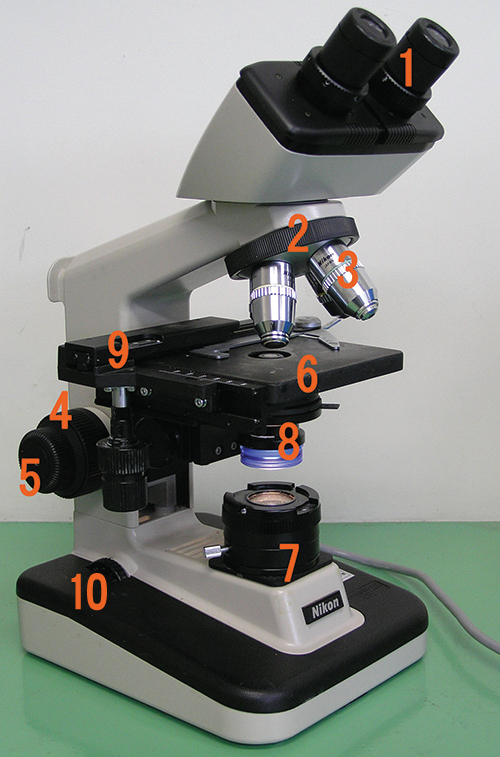

Notification Switch
Would you like to follow the 'Microbiology' conversation and receive update notifications?